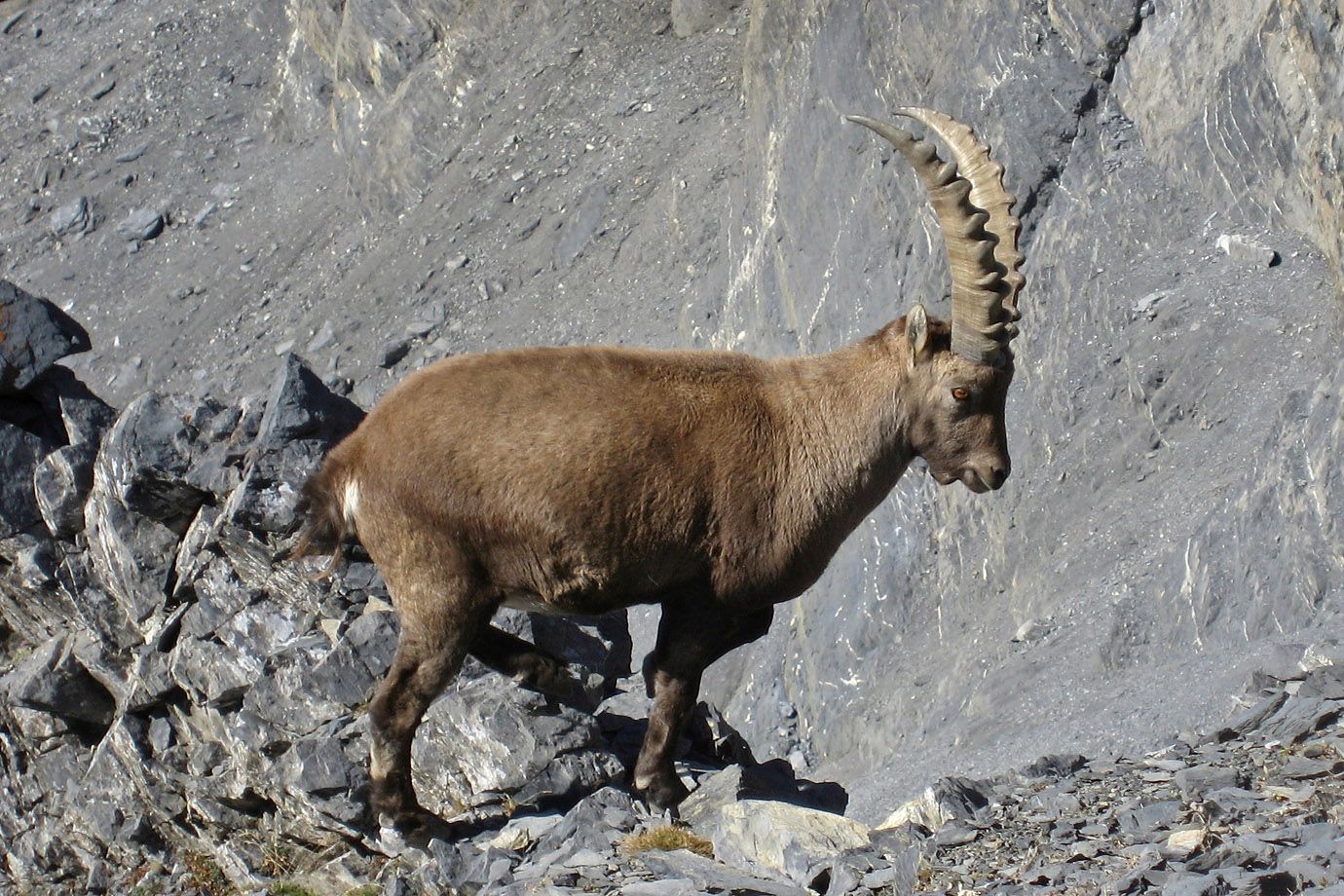
Alpine ibex
The Alpine ibex, Capra ibex, is a species of wild goat that lives in the mountains of the European Alps.
Compared with other members of its genus, the Alpine ibex has a short, broad head and a duller coat pattern. It has brownish grey hair over most of the body, with slightly darker markings on the chin and throat, and in a stripe along the back, and a pale abdomen. They moult twice a year, firstly in April or May, and then again in September, when they replace the short summer coat with thicker hair and a woolly undercoat. As with all goats, males have beards, while females do not.
Males commonly grow to a height of 90 to 101 centimetres at the withers, with a body length of 149 to 171 centimetres and weigh from 67 to 117 kilograms . Females are noticeably smaller, with a shoulder height of 73 to 84 centimetres, a body length of 121 to 141 centimetres, and a weight of 17 to 32 kilograms. Both male and female Alpine ibexes have large, backwards-curving, horns with numerous ridges along their length. At 69 to 98 centimetres, those of the males are substantially larger than those of females, which reach only 18 to 35 centimetres in length.
The Alpine ibex was, at one point, restricted only to the Gran Paradiso national park in northern Italy, but in recent years it has recolonised most of the European Alps, and is found in Italy, France, Germany, Switzerland, Austria, and Slovenia. There are currently no recognised subspecies.
Source: en.wikipedia.org/wiki/Alpine_ibex - 23.10.2008
Alpine Ibex
How is it possible, that a heavy-weight animal like an Alpine Ibex can move so speedy and easy on such a ground?








